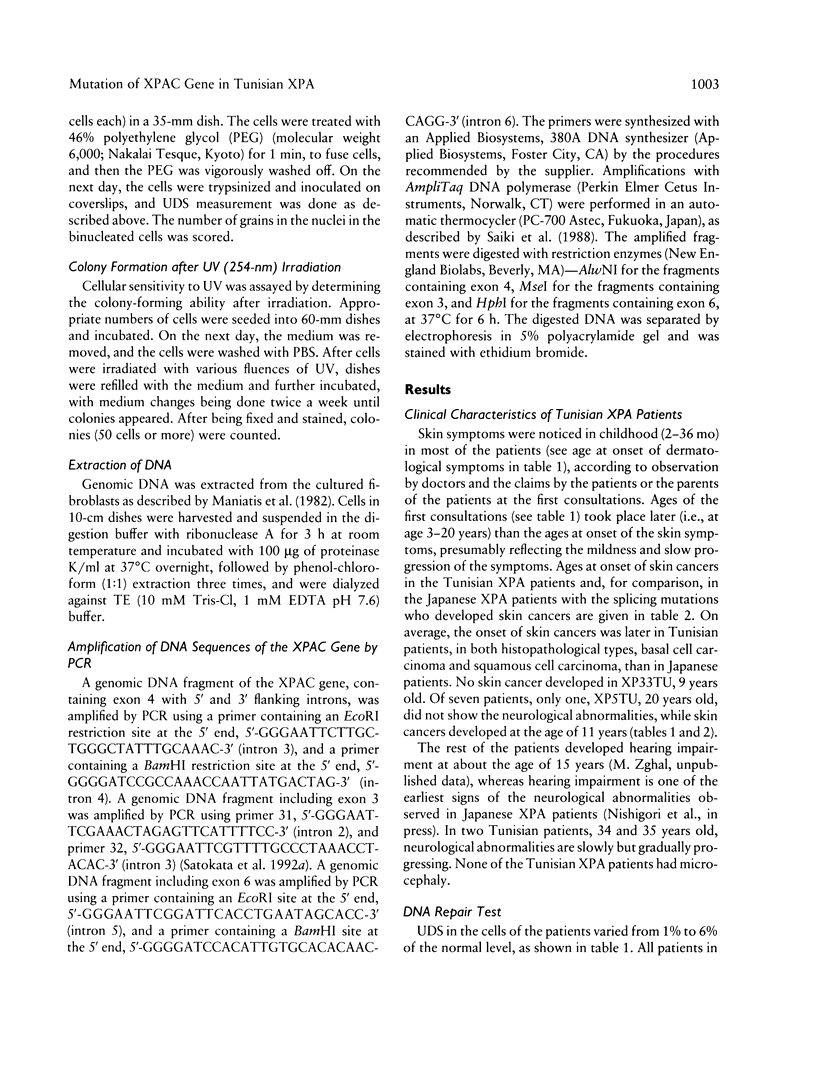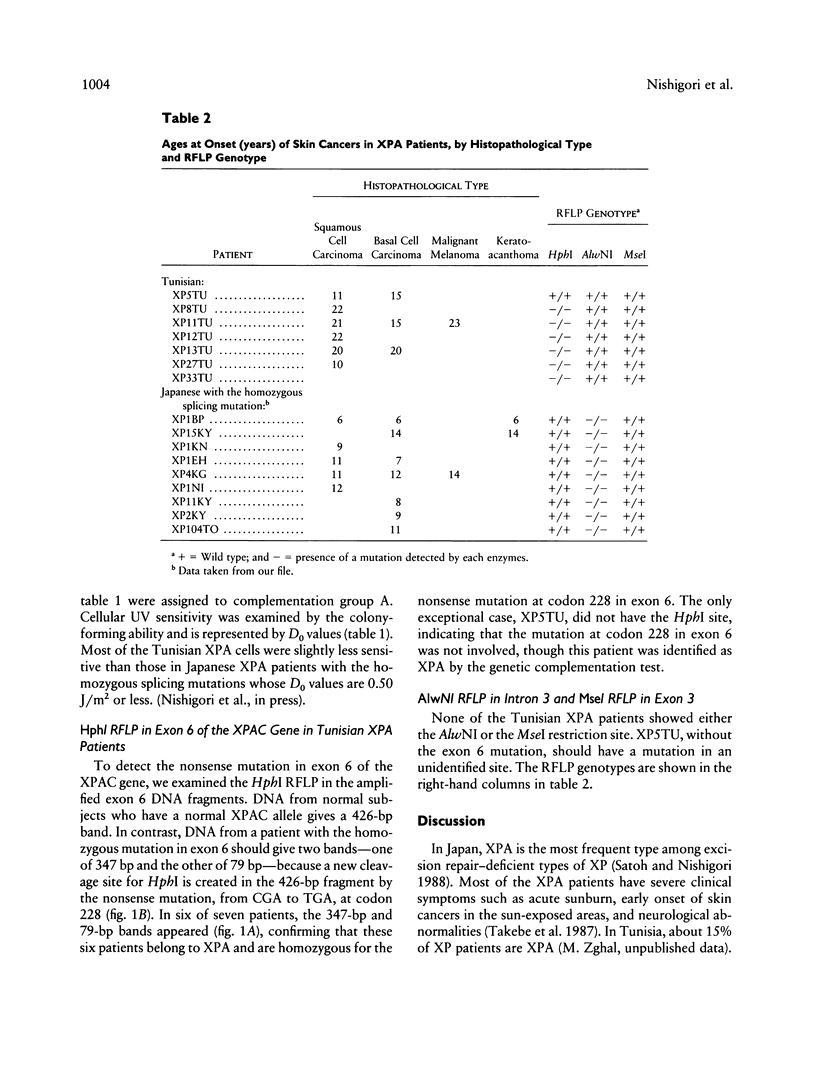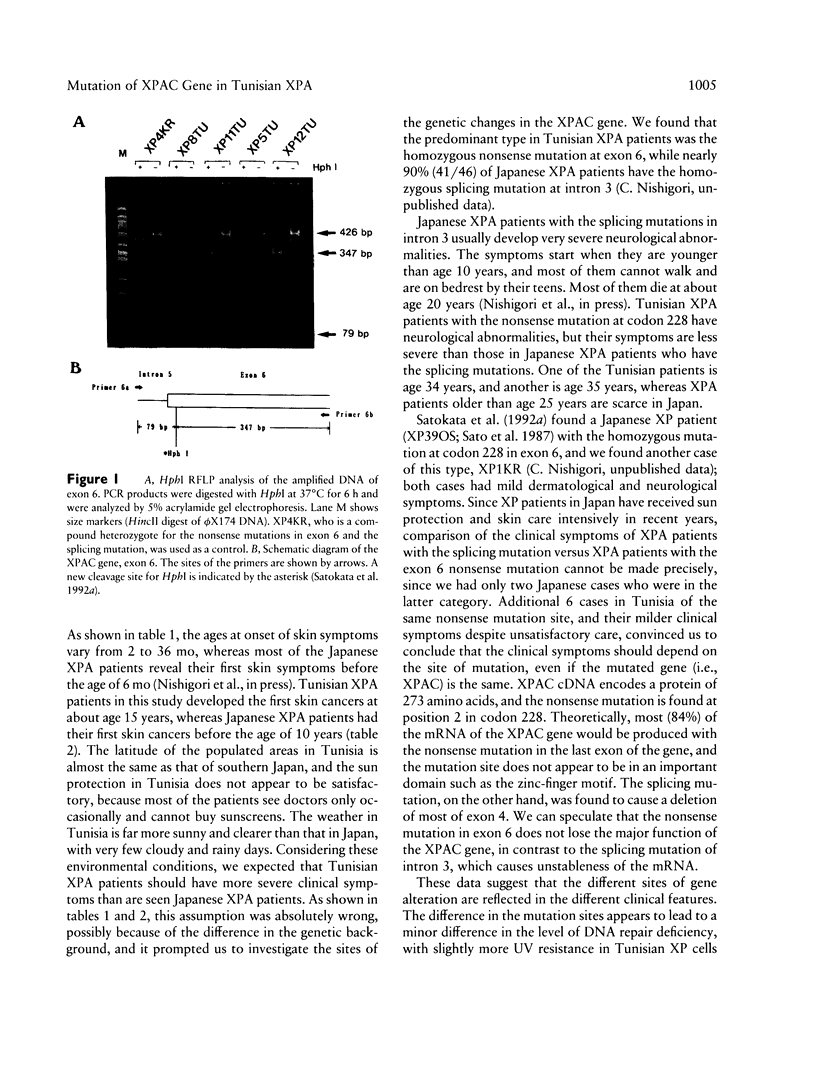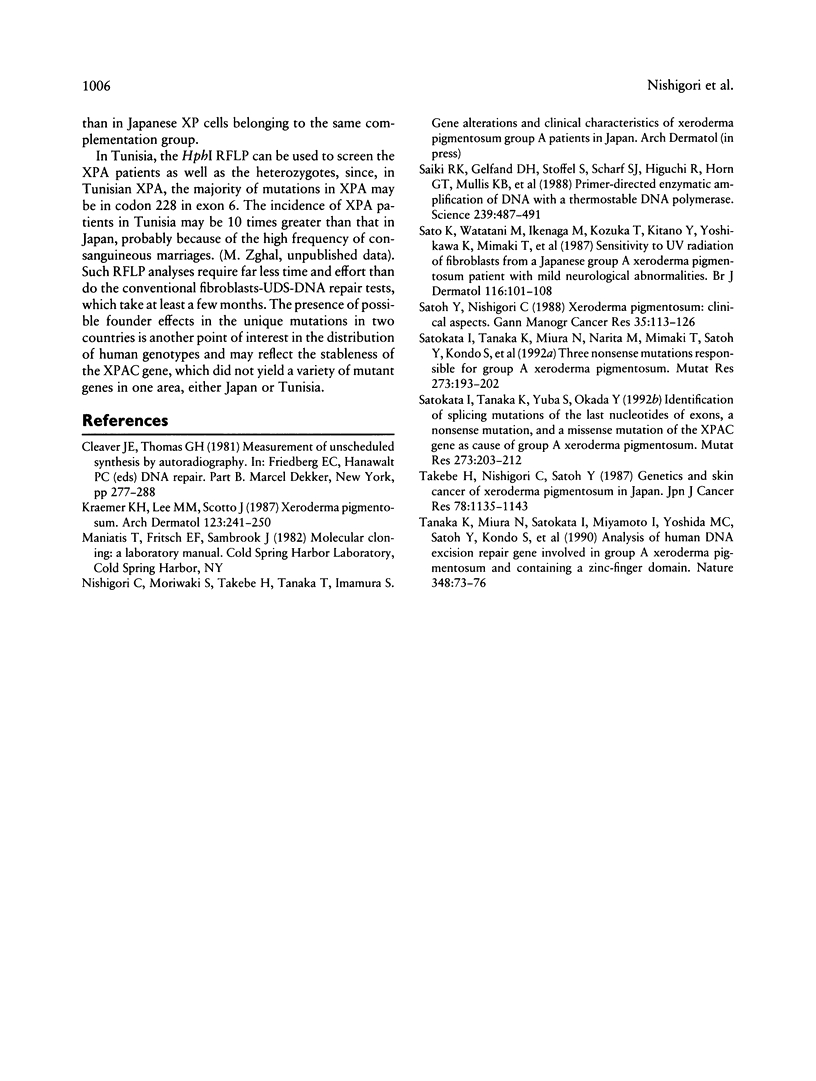Abstract
Xeroderma pigmentosum (XP) patients in Tunisia who belong to the genetic complementation group A (XPA) have milder skin symptoms than do Japanese XPA patients. Such difference in the clinical features might be caused by the difference in the site of mutation in the XP A-complementing (XPAC) gene. The purpose of this study is to identify the genetic alterations in the XPAC gene in the Tunisian XPA patients and to investigate the relationship between the clinical symptoms and the genetic alterations. Three sites of mutation in the XPAC gene have been identified in the Japanese XPA patients, and about 85% of them have a G-->C point mutation at the splicing acceptor site of intron 3. We found that six (86%) of seven Tunisian XPA patients had a nonsense mutation in codon 228 in exon 6, because of a CGA-->TGA point mutation, which can be detected by the HphI RFLP. This type of mutation is the same as those found in two Japanese XPA patients with mild clinical symptoms. Milder skin symptoms in the XPA patients in Tunisia than in those in Japan, despite mostly sunny weather and the unsatisfactory sun protection in Tunisia, should be due to the difference in the mutation site.
Full text
PDF





Images in this article
Selected References
These references are in PubMed. This may not be the complete list of references from this article.
- Kraemer K. H., Lee M. M., Scotto J. Xeroderma pigmentosum. Cutaneous, ocular, and neurologic abnormalities in 830 published cases. Arch Dermatol. 1987 Feb;123(2):241–250. doi: 10.1001/archderm.123.2.241. [DOI] [PubMed] [Google Scholar]
- Saiki R. K., Gelfand D. H., Stoffel S., Scharf S. J., Higuchi R., Horn G. T., Mullis K. B., Erlich H. A. Primer-directed enzymatic amplification of DNA with a thermostable DNA polymerase. Science. 1988 Jan 29;239(4839):487–491. doi: 10.1126/science.2448875. [DOI] [PubMed] [Google Scholar]
- Sato K., Watatani M., Ikenaga M., Kozuka T., Kitano Y., Yoshikawa K., Mimaki T., Abe J., Sugita T. Sensitivity to UV radiation of fibroblasts from a Japanese group A xeroderma pigmentosum patient with mild neurological abnormalities. Br J Dermatol. 1987 Jan;116(1):101–108. doi: 10.1111/j.1365-2133.1987.tb05796.x. [DOI] [PubMed] [Google Scholar]
- Satokata I., Tanaka K., Miura N., Narita M., Mimaki T., Satoh Y., Kondo S., Okada Y. Three nonsense mutations responsible for group A xeroderma pigmentosum. Mutat Res. 1992 Mar;273(2):193–202. doi: 10.1016/0921-8777(92)90080-m. [DOI] [PubMed] [Google Scholar]
- Satokata I., Tanaka K., Yuba S., Okada Y. Identification of splicing mutations of the last nucleotides of exons, a nonsense mutation, and a missense mutation of the XPAC gene as causes of group A xeroderma pigmentosum. Mutat Res. 1992 Mar;273(2):203–212. doi: 10.1016/0921-8777(92)90081-d. [DOI] [PubMed] [Google Scholar]
- Takebe H., Nishigori C., Satoh Y. Genetics and skin cancer of xeroderma pigmentosum in Japan. Jpn J Cancer Res. 1987 Nov;78(11):1135–1143. [PubMed] [Google Scholar]
- Tanaka K., Miura N., Satokata I., Miyamoto I., Yoshida M. C., Satoh Y., Kondo S., Yasui A., Okayama H., Okada Y. Analysis of a human DNA excision repair gene involved in group A xeroderma pigmentosum and containing a zinc-finger domain. Nature. 1990 Nov 1;348(6296):73–76. doi: 10.1038/348073a0. [DOI] [PubMed] [Google Scholar]



